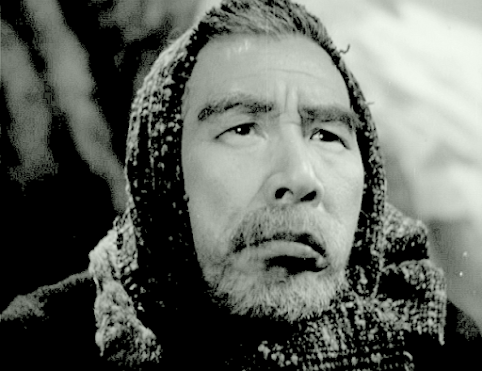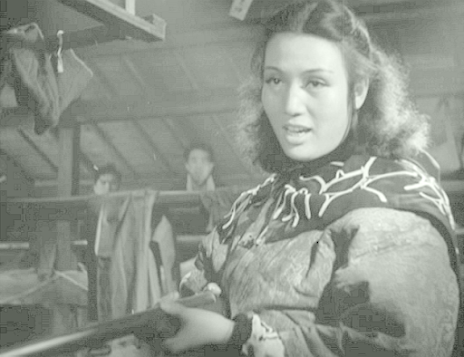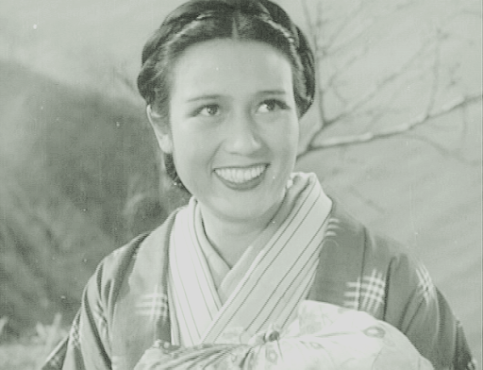Jakoman and Tetsu / ジャコ万と鉄 (1949)
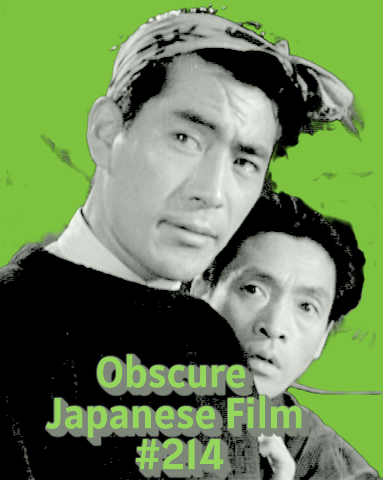 Toshiro Mifune and Kamatari Fujiwara
Toshiro Mifune and Kamatari Fujiwara
Kyubei (Eitaro Shindo, better known as Sansho the Bailiff) has a herring-fishing business in Hokkaido andis anticipating the annual arrival of the fish when his son, Tetsu (ToshiroMifune) – presumed missing in the war – unexpectedly turns up. Tetsu issurprised to find that one of the fishermen employed by his father just liesaround all day drinking saké and refusing to work. The man in question is Jakoman(Ryunosuke Tsukigata), an aggressive individual with an eye-patch whom everyoneis afraid of and who has a beef with Kyubei because Kyubei stole his boat toescape from Sakhalin island when the Japanese were chased out by the Russiansat the end of the war.
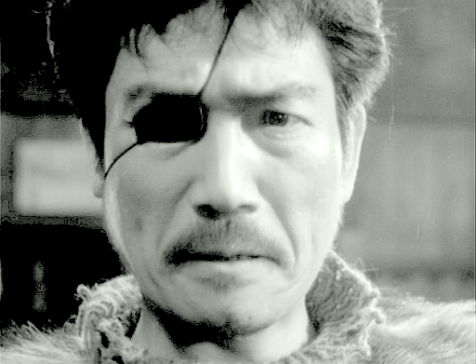
Meanwhile, a woman named Yuki (Yuriko Hamada) turns up in searchof Jakoman, and it emerges that she’s in love with him despite the fact that hewants nothing to do with her and treats her roughly. In the midst of all thispersonal drama, the herring finally appear just as the men call a strike due tolow pay…
This Toho production* was based on a 1947 novel entitled Nishin ryoba (‘Herring Fishing Grounds’)by Tokuzo Kajino (1901-84, sometimes incorrectly listed as ‘Keizo Kajino’ or‘Shinzo Kajino’). The screenplay was co-written by the director, SenkichiTaniguchi, and Akira Kurosawa, with whom Taniguchi frequently collaborated duringthis stage in their careers, and its full of characteristic Kurosawa touches. Onesuch is when Kyubei’s son-in-law (Kurosawa favourite Kamatari Fujiwara), anapparently slow-witted clerk given to hiccups and sneezing, plays the shakuhachi (bamboo flute) and moveseveryone to tears, instantly clearing up the mystery of what his wife (NijikoKiyokawa) sees in him. Indeed, the script seems to have been largely the workof Kurosawa, with Taniguchi making some changes when he came aboard asdirector, and Kurosawa apparently brought the characters of Jakoman and Tetsuto the fore for the film, whereas the source novel had Kyubei as its mainprotagonist. Concerning Taniguchi, it’shard to take him very seriously as a director given the hokum that he made inthe final years of his career, while the fact that so many of his other films are basicallyinaccessible means that he’s likely to be forever regarded as a footnote toKurosawa (who was said to have done much of the editing on Taniguchi’s earlyfilms).
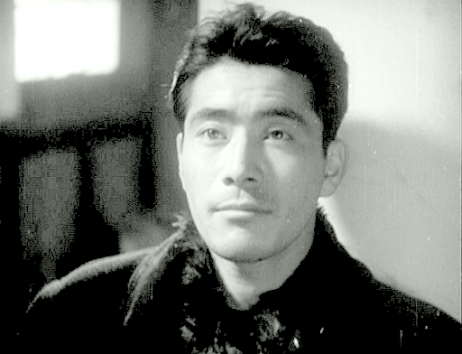
Mifune – who has to perform a spectacularly weird song and dancewhich I bet embarrassed him – looks great and is effortlessly likeable asTetsu, while Ryunosuke Tsukigata is almost too convincing as the villainousJakoman, his one eye glinting with concentrated malevolence. Tsukigata hadpreviously played two of the opponents in Kurosawa’s Sanshiro Sugata films and has a staggering 499 credits on theJapanese Movie Database. The female lead, Yuriko Hamada, also makes a strongimpression even if her feisty character is tamed at the end. (Hamada’s fateremains a mystery – she made her final film in 1957 and nobody seems to knowwhat happened to her after that.) Excellent use of locations and a fine scoreby Godzilla composer Akira Ifukubealso help to make this an enjoyable watch. The main flaw of the film is that itlacks subtlety in the way it puts across its rather obvious moral message.
In regard to Kinji Fukasaku’s 1964 remake, while it was a goodidea to replace the original film’s subplot of Tetsu falling in love with agirl he sees playing the organ in a Christian church** (played by an almostunrecognisably young Yoshiko Kuga) with one in which he falls in love with thesister of a deceased comrade whose family he visits, in my opinion that was theonly thing that the remake did right. Aside from that, everything that was goodabout the first film has evaporated in Fukasaku’s tedious version, which seemsto have been a vanity project initiated by its star, Ken Takakura. Unfortunately,that’s the one which is available in a very nice limited Blu-Ray from 88 Films.
The original film was abox office success and spawned a sequel entitles Jiruba Tetsu (1950) again starring Mifune, Yuriko Hamada and EitaroShindo and co-written by Kurosawa but directed by Isamu Kosugi and produced byTokyo Eiga.
*Actually, although itwas distributed by Toho and bears the Toho logo at the beginning, the followingtitle card announces the film as a ’49 Years production’. It seems to be theonly film credited thus, something which appears to be a result of the labourdispute that was going on at Toho at the time. Perhaps the strike called by themen in the film was partly a comment on the situation, but though the fishermen settletheir differences with Kyubei, that was sadly not to be the case at the studio.
**According to ‘I LoveJakoman’ on Amazon Japan,
…it was Taniguchi's idea for Tetsu to fall in love with the church girl, andupon hearing it, Akira Kurosawa reportedly remarked, "That stinks."(Taniguchi himself said this at a Taniguchi Film Screening).
Only Kurosawa andTaniguchi are credited with the screenplay for the 1964 remake, but it’sunclear whether either had any involvement in the changes made.
Watched without subtitles

